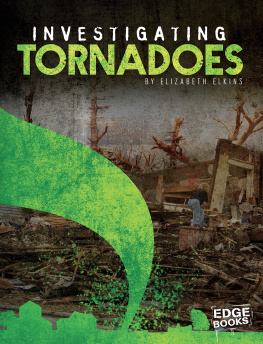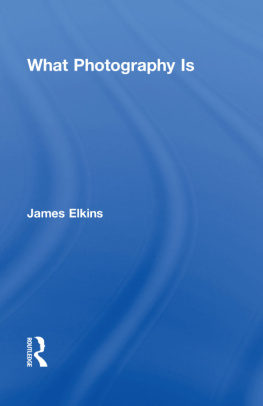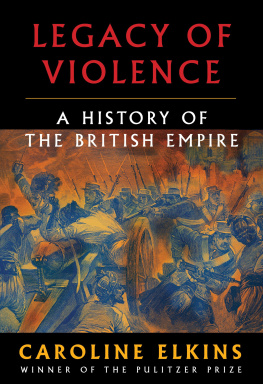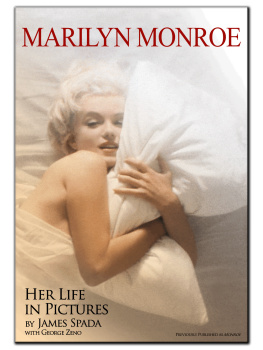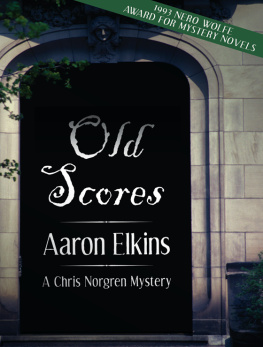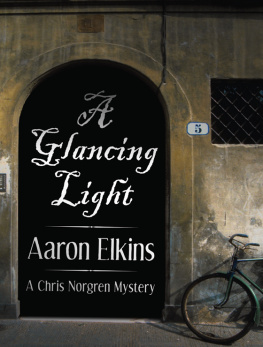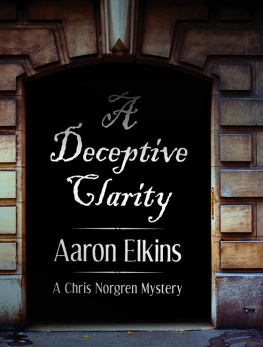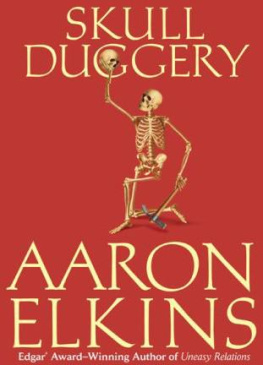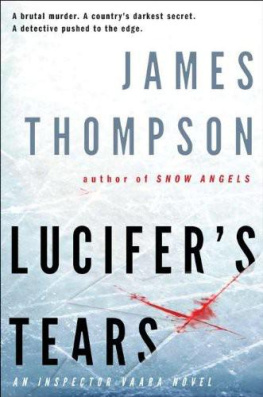Elkins James - Pictures and Tears
Here you can read online Elkins James - Pictures and Tears full text of the book (entire story) in english for free. Download pdf and epub, get meaning, cover and reviews about this ebook. year: 2005, publisher: Taylor & Francis Group, genre: Religion. Description of the work, (preface) as well as reviews are available. Best literature library LitArk.com created for fans of good reading and offers a wide selection of genres:
Romance novel
Science fiction
Adventure
Detective
Science
History
Home and family
Prose
Art
Politics
Computer
Non-fiction
Religion
Business
Children
Humor
Choose a favorite category and find really read worthwhile books. Enjoy immersion in the world of imagination, feel the emotions of the characters or learn something new for yourself, make an fascinating discovery.
- Book:Pictures and Tears
- Author:
- Publisher:Taylor & Francis Group
- Genre:
- Year:2005
- Rating:3 / 5
- Favourites:Add to favourites
- Your mark:
- 60
- 1
- 2
- 3
- 4
- 5
Pictures and Tears: summary, description and annotation
We offer to read an annotation, description, summary or preface (depends on what the author of the book "Pictures and Tears" wrote himself). If you haven't found the necessary information about the book — write in the comments, we will try to find it.
Pictures and Tears — read online for free the complete book (whole text) full work
Below is the text of the book, divided by pages. System saving the place of the last page read, allows you to conveniently read the book "Pictures and Tears" online for free, without having to search again every time where you left off. Put a bookmark, and you can go to the page where you finished reading at any time.
Font size:
Interval:
Bookmark:

MANY SPECIALISTS HAVE helped me round up the available facts; I want especially to mention Ann Adams, Leah Garchik, DArcy Grigsby, Elizabeth Honig, Margaretta Lovell, Marilyn Lavin, Tom Lutz, Richard Lowry, David Morgan, Loren Partridge, and Toma Vlek. Frank Tarbox helped reorient the much-rewritten preface. Bertrand Roug wrote me a series of brief letters without preparation, on the spur of the moment: all the more amazing, then, that they have crystallized so many of the thoughts that follow. Patricia van der Leun showed me how to break up the jostling pieces of my prose, which were clattering against each other like icebergs: she helped melt them into something more fluid. Gary Schwartz put my question (Who has cried in front of paintings?) on his listserve on the Internet, and in Het Financieele Dagblad, a Dutch newspaper. (The inquiry also ran in the New York Review of Books .) Some of the letters I quote were written to both of us, or directly to Gary; he gets special thanks for tirelessly collecting, copying, and forwarding those letters. Thanks as well to my editor, Bill Germano, who gave me another year to try once again!to find the right tone between forensic detachment and maudlin mist.
But most of all I owe the many people, from all walks of life, who answered my requests for memories of crying. Without them, this book would have had no present-day witnesses to verify its history.
Thirty-two letters
THESE ARE THIRTY-TWO of the four hundred letters I received in the course of writing this book. Most are mentioned in the book, but I wanted to let them speak for themselves.
Many of my correspondents wanted to remain anonymous; some, as they say in newspaper jargon, are on deep background. (Some of the most prominent members of my profession are hidden among these pages, unwilling to go on the record.) Others have consented to be named: a brave act in a century so inordinately proud of its self-control. When a person has wanted to remain anonymous, I have invented a first name and an initial, like this: Joseph K. When a name is given in full, it is the persons real name.
I have silently edited many of the letters, omitting passages that are irrelevant or that would give away the writers identity. In the case of letters from other countries, I have translated freely, and where the letters were in faulty English, I have rearranged syntax and edited solecisms. In all this I have tried to be faithful to the writers spirit and intent.
LETTER 1
First, two letters about the Second World War. In this one, a woman recounts a sad moment in exile.
November 19, 1996
Nice. 1942. In the Rue de France there was a store which, if it still exists, is now probably called a gallerybut which in 1942 was satisfied with the sign Tableaux. It had two windows, one on either side of the door.
On that particular day, there stood in the left window a painting of pleasure boats in a small harbor, signed Vlaminck. It was a sparkling of blues, whites, reds, and yellows, riotously joyous and pleasing. Passing to the right window, I saw a somewhat subdued painting which, at first glance, seemed to be made by a clumsy beginner. It showed a coin de banlieue: a curving lane, unevenly surfaced; a fence made of weathered boards, entirely hiding whatever might be behind it; a tree with meager foliage; and part of a blind wall to the right. The sky was overcast. There was an abundance of ochre and gray. It was by somebody called Utrillo.
The name meant nothing to me: I was nineteen then and didnt know much about painters. But I stood looking at the Utrillo painting for a long, long time and the more I looked, the less clumsy it seemed. It was as if I could walk along that dismal lane, along that old fence which would surely be followed by another one no less ugly, no less secretive. All the dullness and drabness of the northern banlieues of Paris oozed from this picture.
I had grown up in such a banlieue, disliking it. When the German army occupied France, my family and I fled south as far as we could go, seeking the safety of Nice, in Vichy-France. I enjoyed the light, the palm trees, the blue Mediterranean, the gaily colored houses. But now, looking at the Utrillo, I was overwhelmed by nostalgiaa nostalgia I didnt understand because it was for something so sadly ugly.
When I tore myself away from the contemplation of the painting and climbed back on my bicycle, I discovered I couldnt see properly because my eyes were full of tears.
To this day I cannot explain those tears. Was the cause objective: the evocative, slightly childish style of the painting? The absence of beauty, caught by Utrillos almost photographic eye? Was it subjective: the unconsciously repressed feeling of being but a stranger, an onlooker in this lovely Nice which was not my home?
In the further course of my life my tastes in painting have developed. Among my favorites now are Botticelli, Gainsborough, Magritte, and Edward Hopper. Yet I have never cried looking at any of their works. I dont particularly care for Utrillo and I loathe primitives, so I dont expect to cry at their paintings. I didnt cry at Ryoan-ji (though I felt wonderfully at peace there); nor have I cried at Delphi or at Canterburyand not even at the Western Wall.
It remains a mystery.
Yours very respectfully,
Mrs. B.L.Libgott
LETTER 2
The second war story. This one reveals that even Hemingway had a soft spot for sentimental pictures.
August 13, 1997
Dear Mr. Elkins,
In 1944 in May, I was aboard ship conveying war materials from New York to Great Britain. I was serving on a Canadian Corvet.
On this particular trip we arrived in New York from overseas in the early part of May. We had three days shore leave before we would again leave New York with a convoy to Great Britain. My buddy and I went ashore the first day and ended up at the Gladstone Hotel in downtown New York. How we ended up there I cannot really recall. In any event, we had several drinks at the hotel and were just going to leave when Ernest Hemingway came into the hotel lobby. I easily recognized him and in fact had read all of his books that had been published to that date.
I approached Hemingway warily as I had heard of his so-called bullying tactics, but when he recognized our Canadian Naval uniforms he insisted that we all have a drink together. He said that one of his sons had served in the Royal Airforce. We of course agreed to go for a drink and we went to a bar on Third Avenue called Costellos, or some similar name. When we arrived at this bar there were several people who knew Hemingway and greeted him enthusiastically. We all went into a dining area of sorts, and there was a large amount of food eaten and many drinks consumed. In fact, we were all certainly in a very happy frame of mind.
When we had entered the dining area I had noticed several wall murals or paintings and during the meal and the imbibing, Hemingway pretty well dominated the conversation (which of course pleased me) and referred to these drawings on many occasions. He seemed to be drawn to some aspect of them that deeply affected him.
I do not know how long this memorable meal went on, but for a young sailor from Canada who had read Hemingways books, this was indeed a heady experience. In any event, when the party broke up, Hemingway, who had certainly consumed his share of potables, pointed to the murals on the dining room walls and said, These make me very sad, and I am going overseas again in a few days. With that he began to weep uncontrollably and was, for a few minutes, inconsolable. We were all rather embarrassed, and everyone commiserated with him; and within a few minutes he was all right. He then said, For one reason or another those pictures make me very sad. I asked the party now fifteen or sixteen peopleabout the murals. They were surprised that I did not recognize them as being the work of James Thurber.
Font size:
Interval:
Bookmark:
Similar books «Pictures and Tears»
Look at similar books to Pictures and Tears. We have selected literature similar in name and meaning in the hope of providing readers with more options to find new, interesting, not yet read works.
Discussion, reviews of the book Pictures and Tears and just readers' own opinions. Leave your comments, write what you think about the work, its meaning or the main characters. Specify what exactly you liked and what you didn't like, and why you think so.




